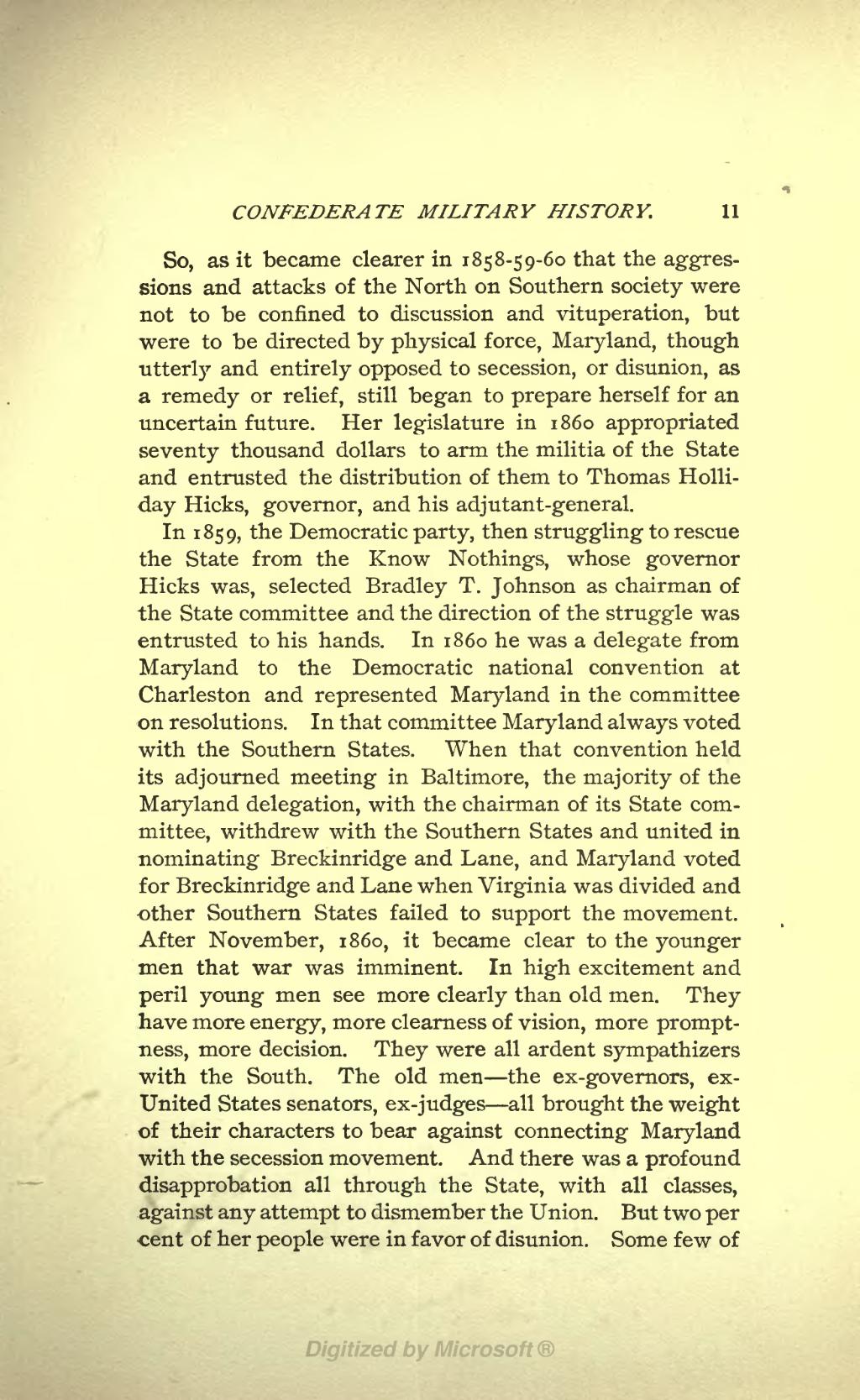So, as it became clearer in 1858-59-60 that the aggressions and attacks of the North on Southern society were not to be confined to discussion and vituperation, but were to be directed by physical force, Maryland, though utterly and entirely opposed to secession, or disunion, as a remedy or relief, still began to prepare herself for an uncertain future. Her legislature in 1860 appropriated seventy thousand dollars to arm the militia of the State and entrusted the distribution of them to Thomas Holliday Hicks, governor, and his adjutant-general.
In 1859, the Democratic party, then struggling to rescue the State from the Know Nothings, whose governor Hicks was, selected Bradley T. Johnson as chairman of the State committee and the direction of the struggle was entrusted to his hands. In 1860 he was a delegate from Maryland to the Democratic national convention at Charleston and represented Maryland in the committee on resolutions. In that committee Maryland always voted with the Southern States. When that convention held its adjourned meeting in Baltimore, the majority of the Maryland delegation, with the chairman of its State committee, withdrew with the Southern States and united in nominating Breckinridge and Lane, and Maryland voted for Breckinridge and Lane when Virginia was divided and other Southern States failed to support the movement. After November, 1860, it became clear to the younger men that war was imminent. In high excitement and peril young men see more clearly than old men. They have more energy, more clearness of vision, more promptness, more decision. They were all ardent sympathizers with the South. The old men—the ex-governors, ex-United States senators, ex-judges—all brought the weight of their characters to bear against connecting Maryland with the secession movement. And there was a profound disapprobation all through the State, with all classes, against any attempt to dismember the Union. But two percent of her people were in favor of disunion. Some few of
